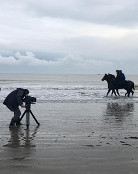Donn's Articles » Straight to Cheltenham
Straight to Cheltenham
If the 2010 William Hill King George VI Chase had actually taken place in 2010, then we would be faced with the prospect of the first four horses in the market for the Cheltenham Gold Cup actually making their 2011 debuts in the Gold Cup.
Kauto Star was always going straight from the King George to the Gold Cup, just as he did last year, and the year before, side-stepping February’s Ascot Chase which, many believe, knocked just enough freshness out of him to allow Denman deliver a knockout blow at Cheltenham in 2008.
Denman himself flirted with the Lexus Chase before Paul Nicholls decided not to run him between the Hennessy and the Gold Cup; Diamond Harry did likewise before Nick Williams made a similar decision. Imperial Commander’s route would have been Betfair Chase, King George, Gold Cup, the route that took him to the summit last season, if the BHA had not bizarrely decided to restrict Saturday’s re-scheduled King George to those who were declared at the original final declaration stage. Now Nigel Twiston-Davies is taking his ball with him and going straight to Cheltenham.
These are changed times: you don’t need a racecourse to get a horse fit any more. Training methodologies have evolved to the point at which race-fitness can be achieved without the need to leave the confines of the yard.
Attitudes have also changed. It is only seven years since Henrietta Knight was pilloried in certain quarters for keeping Best Mate to herself, for racing the perennial champion sparingly in order to ensure that he was exactly where she wanted him to be, the ideal mix of fitness and freshness, on Gold Cup day. Hers was the lot of the modern day heliocentricist, derided until it was eventually universally accepted that the earth did, in fact, revolve around the sun.
Remarkably, seven of the last nine Gold Cup winners were having their first runs of the calendar year in the Gold Cup. Best Mate (three times), Kicking King, War Of Attrition, Kauto Star (once) and last year’s winner Imperial Commander were all appearing for the first time in public that year at Cheltenham. By contrast, Mr Mulligan was the only one of the previous nine to do so, and that was out of necessity. Jodami had run three times in 1993 before he won the Gold Cup, Cool Ground had run four times in 1992 before his Cheltenham victory.
The idea that a horse could run four times in January and February, and then with the Gold Cup, runs contrary to popular perceptions these days. Indeed, we have gone to the other extreme. Kauto Star raced just three times last season, Denman raced four times, Imperial Commander also raced four times. All things being equal, Denman, Diamond Harry and Imperial Commander will only have had one run this season before they line up at Cheltenham. Kauto Star will have had two. And it is a phenomenon that is not exclusive to the Gold Cup. Many other leading contenders for some of the top Cheltenham Festival prizes – among them Ghizao, Menorah, Poquelin, Big Buck’s for sure, possibly Great Endeavour, Tranquil Sea, Quevega, Grands Crus – will not be seen now until the third week in March.
This phenomenon is symptomatic of the monster that the Cheltenham Festival has become. Whether you think that is a good thing or a bad thing is largely irrelevant; it is an irrefutable fact that Cheltenham week is by far the most important week on the National Hunt racing calendar, its stature such that every other race meeting is secondary. Therefore, you cannot blame trainers for pursuing whatever course of action they think necessary in order to ensure that their horses are as well as they can possibly be for their Cheltenham targets. If that means keeping them from a racecourse for a couple of months before the Festival, if that is the methodology by which they feel their chances of Cheltenham success will be maximised, then that is the course of action that you have to expect they will adopt.
However, the downside is that other meetings, especially those in the lead up to the Cheltenham Festival, suffer. National Hunt stars Binocular and Big Zeb are set to race over the next couple of weeks, but they are more the exception than the rule. There is a danger that the part of the season between Christmas and Cheltenham is spiraling into mediocrity. The Argento Chase hasn’t produced a Gold Cup winner since Looks Like Trouble in 2000, the Irish Hennessy hasn’t produced one since Imperial Call in 1996.
As well as that, one of the main attractions of National Hunt racing, the main criterion put forward by exponents of the game, the thing that differentiates it from flat racing, has always been the fact that, because a gelding has no residual breeding value, we get to see our old friends come back year after year, we get to see them race often, people grow to know and love them, racing fans get to identify with them. But in order for that to happen, they need to see them race. Three or four times a year may just not be enough.
© The Racing Post, 11th January 2011


 Follow Donn
Follow Donn